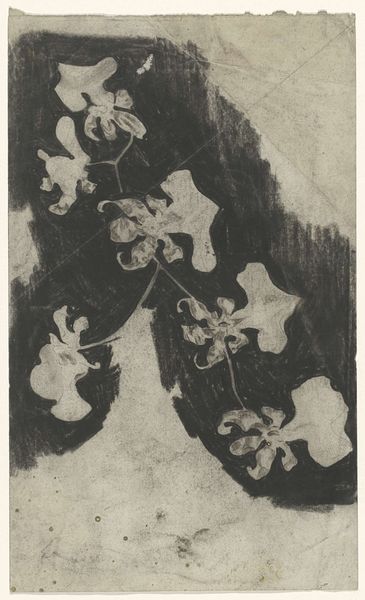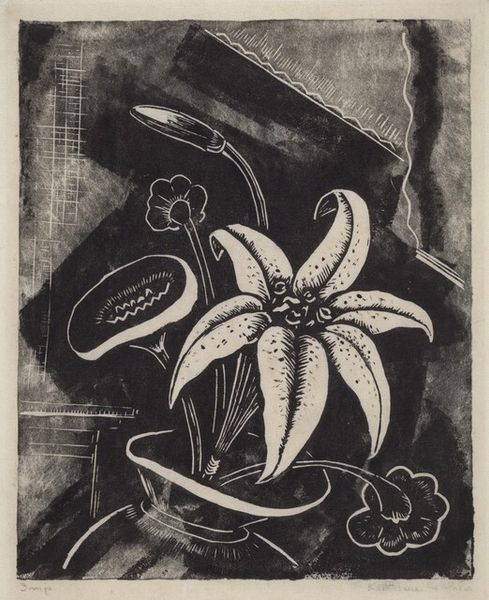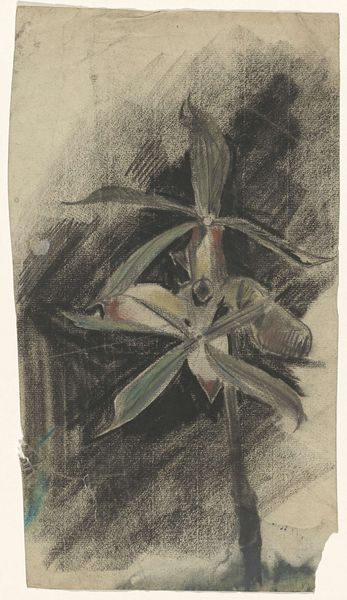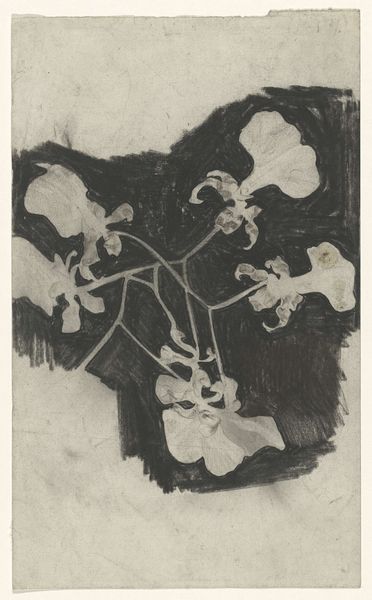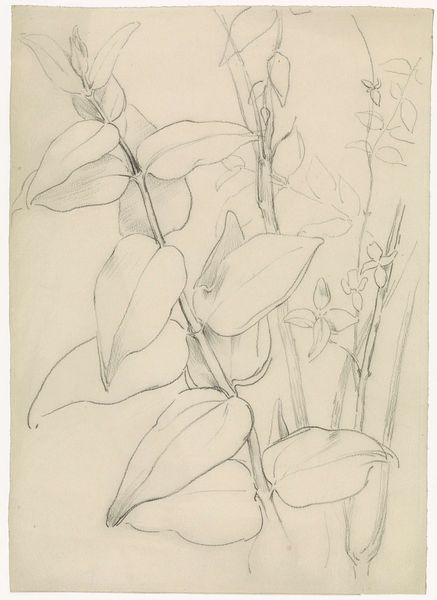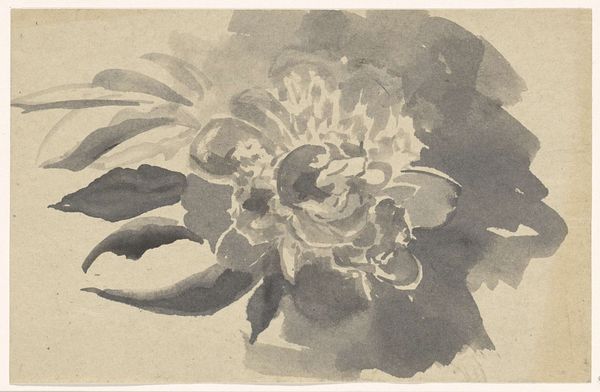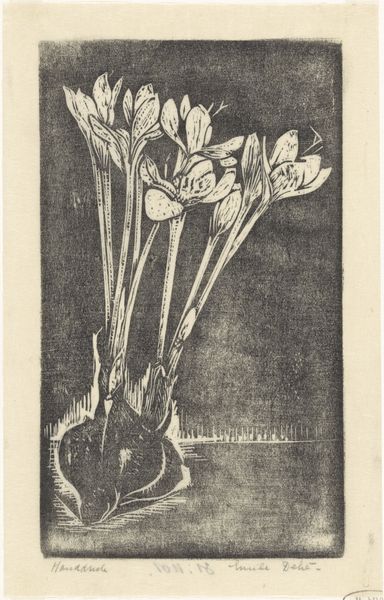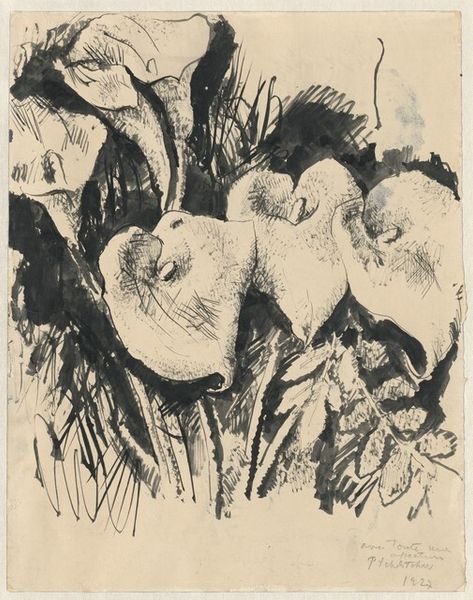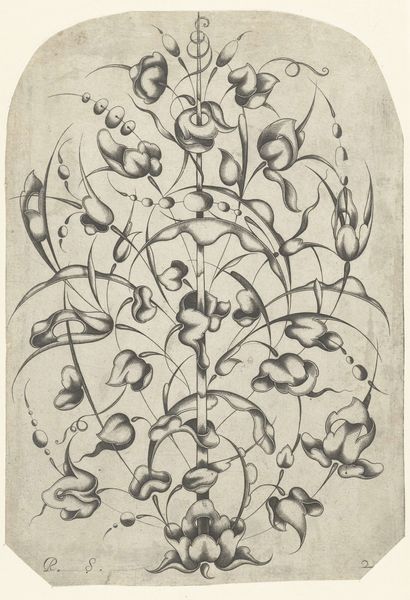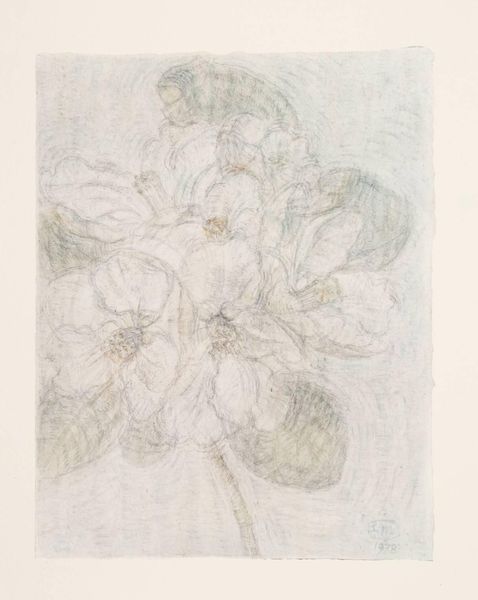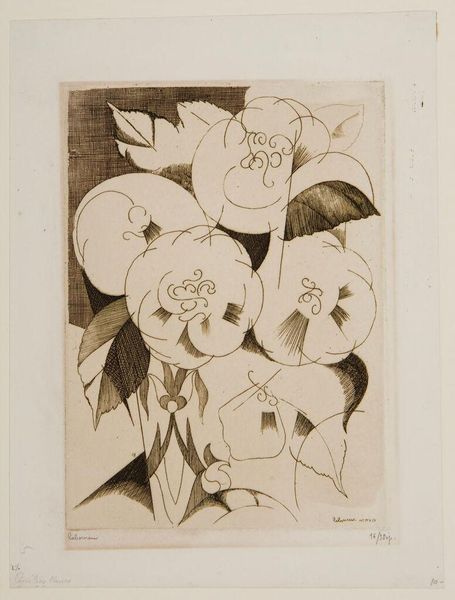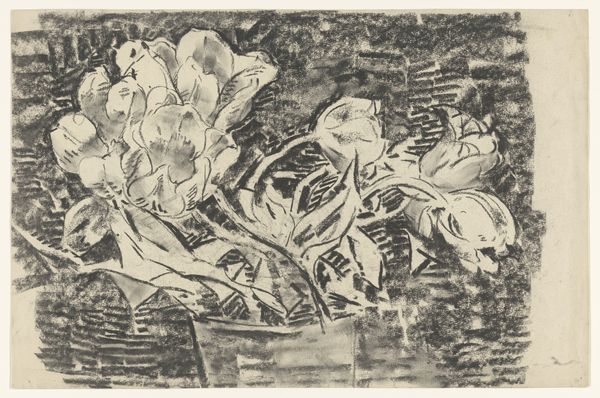
drawing, graphite, charcoal
#
drawing
#
graphite
#
charcoal
Dimensions: height 321 mm, width 201 mm
Copyright: Rijks Museum: Open Domain
Editor: Here we have Carel Adolph Lion Cachet's "White Lilies," made sometime between 1874 and 1945. It's a drawing created with graphite and charcoal, housed at the Rijksmuseum. I'm really drawn to the textures, especially how the artist contrasts the delicate petals with the smudged background. What do you see in this piece? Curator: The lilies are, of course, beautiful, but for me, it is fascinating to think about the *making* of this drawing. Cachet chose readily available, relatively inexpensive materials—charcoal and graphite—and combined them in a way that transcends their inherent value. Editor: That's an interesting point! How does that choice of material change our understanding of the piece? Curator: Well, consider the societal implications. Flowers, particularly lilies, were often associated with wealth and status in art. Yet, here, Cachet uses humble materials to depict a subject usually rendered in oil paint by the well-to-do. What labor went into sourcing the materials and then translating those raw materials into a finished, viewed object? It asks questions about value and how it's constructed. Editor: So, it challenges the traditional hierarchy between different art forms? Curator: Precisely! It invites us to consider the social and economic contexts that shape artistic production. Instead of only contemplating beauty, we're prompted to examine the labor, materials, and the entire system surrounding the creation of this seemingly simple drawing. Editor: That’s such a different way of viewing it. I will certainly think about the labor next time! Curator: Wonderful! The seemingly 'simple' is very often much more complex.
Comments
No comments
Be the first to comment and join the conversation on the ultimate creative platform.
